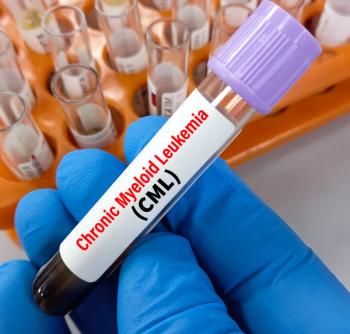
- Volume 75
- Issue 6
Patients and Practitioners Can Be Confused by Pen Designs
Dr. Gaunt is a medication safety analyst and the editor of ISMP Medication Safety Alert! Community/Ambulatory Care Edition.
An error the Institute for Safe Medication Practices (ISMP) received involving the Lantus (insulin glargine rDNA origin) SoloSTAR pen from sanofi-aventis has important implications for practitioners who prescribe and dispense this product or similar insulin pen devices from Novo Nordisk Inc. A Lantus SoloSTAR pen was prescribed for a patient who had prior experience administering Lantus from vials using insulin syringes. The patient was not counseled by his prescriber or by the pharmacist when he picked up the pen at the pharmacy. Each pen contains 300 units of Lantus. The dose is set in the pen’s dosing window by turning a dosage knob. The dose is then released by pressing an injection button, which moves a plunger within the pen’s insulin reservoir.
The physician had instructed the patient to inject 75 units of insulin every morning. Unfortunately, the patient administered 225 units of Lantus instead of the prescribed amount, resulting in an emergency department (ED) visit. The pen looks like it works similar to a syringe or other pen devices, where the plunger moves all the way to the hub of the needle as it releases a dose. The plunger of the pen, however, is not designed to deliver the entire amount of insulin in the reservoir; the plunger only moves partially, resting on a reservoir scale that shows the remaining quantity of Lantus in the pen. The patient, who expected the plunger to move like a typical syringe, did not notice the subtle movement and repeated the injection 3 times, delivering 75 units each time. Fortunately, the patient was monitored and discharged from the ED without permanent harm. He has now received proper instruction on how to use the device.
In another pen-related error, a nurse reported that she accidentally gave the entire contents of Amylin Pharmaceuticals Inc’s Byetta (exenatide) pen device, a medication to improve glucose control in adults with type 2 diabetes, to a patient. The error resulted in a 60-fold overdose. The nurse saw the dosage strength of 5 mcg on the pen’s label. There are no directions on the pen itself, however, after the outer carton is discarded. The nurse had missed the concentration designation and total volume listed in the fine print. The nurse had never used Byetta and was unsure how to activate it, so she withdrew the entire contents (1.2 mL) from the pen’s drug cartridge and administered that amount to the patient. Patients who have experienced 10-fold overdoses have developed severe nausea and vomiting, rapidly declining blood glucose concentrations, and hypoglycemia that may require glucose administration, according to the drug’s labeling. When the patient exhibited these symptoms, appropriate treatment was initiated and the patient recovered.
The wide variety of pen injector designs and activating mechanisms make it difficult for practitioners to learn how to use them properly and maintain competence. All practitioners who prescribe, dispense, or administer insulin via pen injectors should receive adequate education, including hands-on use of a sample pen device. Patients should receive instruction about the use of the device from the prescriber and the dispensing pharmacist. Diabetes educators also should be included in providing instruction to patients. They also may be able to help develop pen device-related educational materials that can be quickly referenced when needed. The manufacturers of the various pen devices offer free educational material on their Web sites. ISMP recommends that health care professionals who prescribe or dispense these products view the online instructional material available for Lantus SoloSTAR (www. lantus.com/solostar/solostar_insulin_ pen.aspx) and Byetta (www.byetta. com/patient/byetta_pen_122.jsp).
Subscribe to Newsletter
Pharmacy Times and the Institute for Safe Medication Practices (ISMP) would like to make community pharmacy practitioners aware of a publication that is available. The ISMP Medication Safety Alert! Community/Ambulatory Care Edition is a monthly compilation of medication-related incidents, error-prevention recommendations, news, and editorial content designed to inform and alert community pharmacy practitioners to potentially hazardous situations that may affect patient safety. Individual subscription prices are $52 per year for 12 monthly issues. Discounts are available for organizations with multiple pharmacy sites. This newsletter is delivered electronically. For more information, send an e'mail message to community@ismp. org, or contact ISMP at 215-947-7797.
Articles in this issue
over 16 years ago
Considerations for Proton Pump Inhibitor Utilizationover 16 years ago
Can You Read These Rxs?over 16 years ago
Going Against the Flow: Oral Contraceptives as Menses Inhibitorsover 16 years ago
Cholesterol Watchover 16 years ago
$734 Billion in Generic Health Care Savingsover 16 years ago
Let's Focus on ADHDover 16 years ago
Diabetes Watchover 16 years ago
A Word on HeartburnNewsletter
Stay informed on drug updates, treatment guidelines, and pharmacy practice trends—subscribe to Pharmacy Times for weekly clinical insights.






















































































































































































































